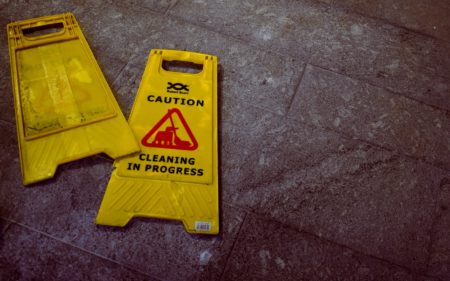22 May 2025
By Roger Kennedy
roger@TheCork.ie
The Growing Importance of Stairlifts in Ireland
As Ireland’s population continues to age, the conversation around accessibility and mobility within the home has become increasingly pressing. One particular area gaining substantial attention is the use of stairlifts. These mechanical devices, once considered a luxury or niche solution, are now seen as essential tools for maintaining independence and quality of life for many Irish citizens. This read explores the growing importance of stairlifts in Ireland, examining the factors driving their popularity, the societal implications, and what the future may hold.
An Ageing Population

The number of people aged 65 and over has risen dramatically over the past two decades and is projected to continue increasing.
According to the Central Statistics Office (CSO), Ireland is experiencing a significant demographic shift. The number of people aged 65 and over has risen dramatically over the past two decades and is projected to continue increasing. By 2051, it’s estimated that one in four people in Ireland will be over the age of 65. With this shift comes the necessity to adapt infrastructure, services, and homes to meet the needs of older adults.
Many seniors prefer to age in place — that is, to remain in their own homes rather than move to residential care facilities. While this approach offers numerous emotional and financial benefits, it also presents logistical challenges. Chief among these is the difficulty of navigating stairs. For individuals with reduced mobility, arthritis, or other health issues, stairs can pose a serious risk. In such cases, stairlifts offer a practical, non-intrusive solution that allows people to maintain their independence safely.
Enhancing Safety and Preventing Accidents
Falls are one of the leading causes of injury among older adults in Ireland. The Health Service Executive (HSE) has highlighted the importance of fall prevention as a public health priority. Stairs are particularly hazardous, often contributing to severe injuries that can lead to hospitalisation or even permanent disability. Installing a stairlift can significantly reduce the risk of such accidents by eliminating the need to climb or descend steps unaided.
Not only do stairlifts help prevent falls, but they also provide peace of mind for families and caregivers. Knowing that a loved one can move safely between floors can alleviate considerable stress and enable individuals to remain in their homes for longer periods.
Economic Considerations & Policy
While stairlifts do represent an upfront cost, they are often a more economical option compared to alternatives like home renovation or long-term residential care. Many Irish homeowners are choosing to retrofit their homes with stairlifts rather than undertake costly and disruptive remodelling projects to create ground-floor living spaces.
Moreover, the Irish government provides several supports that make stairlifts more accessible. The Housing Adaptation Grant for Older People and People with a Disability, for instance, offers financial assistance for home adaptations that improve safety and accessibility. This grant can cover a portion of the cost of a stairlift, making it a viable option for a wider range of households.
Additionally, stairlifts may be eligible for tax relief under the Home Renovation Incentive Scheme or through the medical expenses tax credit, depending on individual circumstances. These economic incentives have played a key role in making stairlifts a more mainstream solution across the country.
Technological Advancements
Stairlift technology has evolved rapidly in recent years, making modern units more reliable, efficient, and user-friendly. Today’s stairlifts come equipped with features such as remote controls, swivel seats, fold-up designs for compact storage, and battery backups for use during power outages. These innovations have helped overcome many of the barriers that once limited stairlift adoption.
Customisation has also improved significantly. Whether a staircase is straight, curved, narrow, or unusually shaped, manufacturers can design stairlifts to suit virtually any home layout. This flexibility ensures that more Irish homes — from traditional cottages to contemporary townhouses — can accommodate a stairlift without major structural changes.
A Shift in Public Perception
There was a time when stairlifts carried a certain stigma, often associated with frailty or severe disability. However, changing attitudes towards ageing and disability have contributed to a broader acceptance of assistive technologies. Increasingly, stairlifts are viewed not as signs of weakness, but as tools for empowerment.
Media coverage, health campaigns, and advocacy from organisations such as Age Action Ireland have played a significant role in reshaping public opinion. Greater awareness of the benefits of stairlifts, combined with improved aesthetics and discreet installation, has helped shift the narrative. More and more, people are proactively investing in stairlifts as a form of future-proofing their homes — not just reacting to a medical need, but planning ahead for continued independence.
Looking to the Future
The importance of stairlifts in Ireland is only expected to grow. As healthcare continues to shift towards community and home-based care models, the role of home adaptations — including stairlifts — will become even more integral. Policymakers, healthcare professionals, and housing developers are already beginning to factor these needs into planning and design.
We can also anticipate further technological innovations, including smarter stairlifts with IoT integration, voice controls, and predictive maintenance features. These advancements will likely make stairlifts even safer, easier to use, and more appealing to a tech-savvy generation of older adults.
O Connor Carroll Stairlifts states that there is also potential for greater integration of stairlifts into broader smart home systems, allowing users to control mobility aids, lighting, heating, and security all from a single interface. As Ireland continues to embrace digital transformation, stairlifts will be part of a larger movement towards intelligent, adaptive homes that support ageing in place.
Final Word
In an ageing society like Ireland, the importance of stairlifts cannot be overstated. What was once seen as a specialised device has evolved into a widely accepted solution for promoting independence, preventing accidents, and supporting quality of life for older and disabled individuals. With growing demand, enhanced technology, and expanding government support, stairlifts are now a key component of inclusive living.
As attitudes continue to shift and the need for home-based care grows, stairlifts will play a pivotal role in enabling people to live safely and comfortably in their own homes. Their importance in Ireland will only continue to rise — not just as mobility aids, but as symbols of autonomy, dignity, and thoughtful design in an evolving society.
250929 DELE prem at req of t


